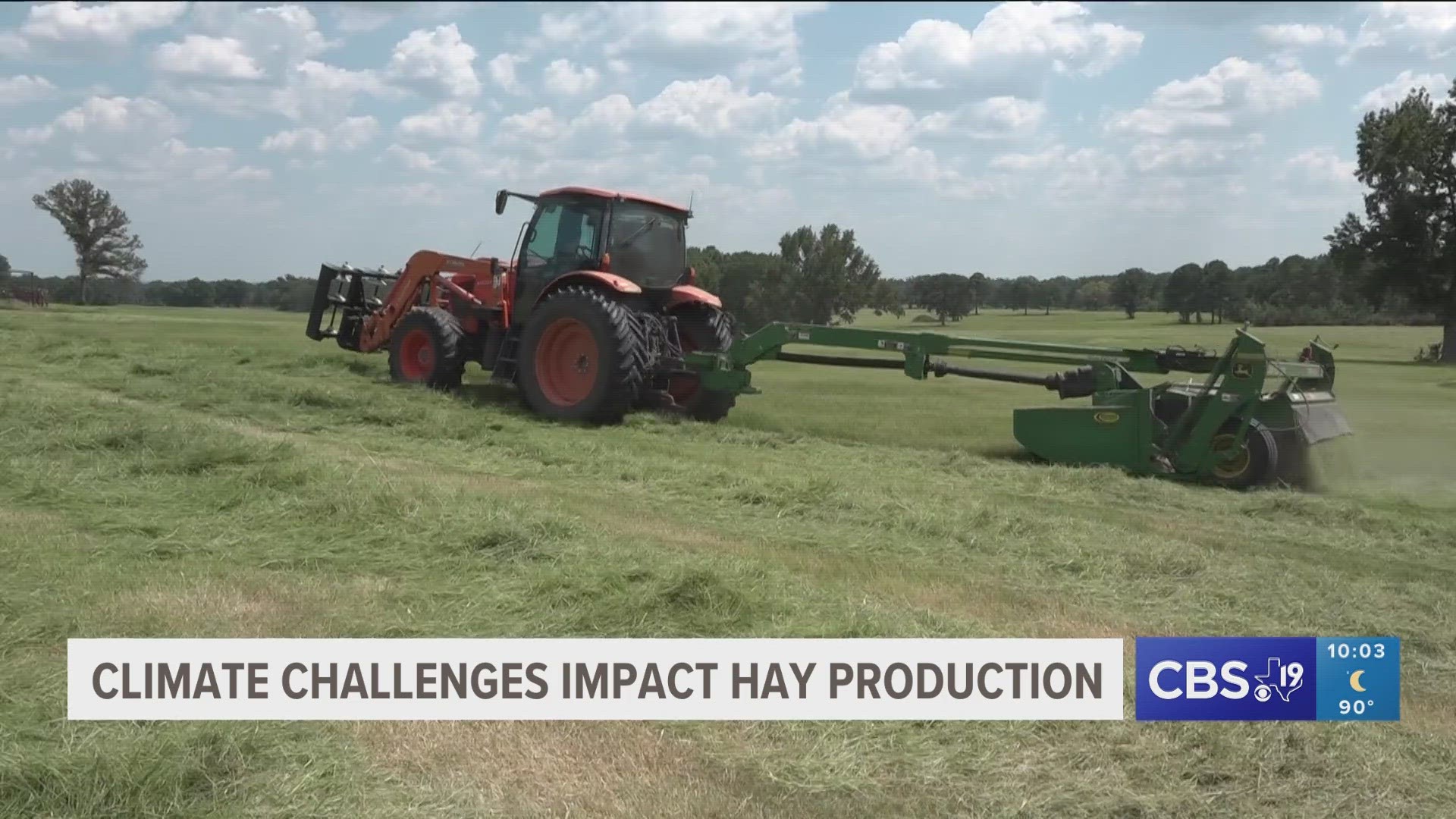HENDERSON, Texas — East Texas has been experiencing excessive heat throughout this summer. The heat is starting to take a noticeable toll on local crops like the hay industry.
According to owner of East Texas Hay Co., David Powell said the heat is restraining the growth of his hay crop. Typically his company would harvest up to 12,000 square bales of hay, but so far they've only harvested 4,000.
This is the second year in a row that his crop has been behind schedule. Powell said last year many of his clients had to purchase their hay from out-of-state.
"There really wasn't any hay left in this area at all so we didn't get to go forward into this year with any surplus," Powell said. "Then we had the cool nights, and the too wet spring which really put a damper on having a good first cutting."
On Monday, the farm was in their second phase of cutting and curating their crop. Powell said at this time of the year they should already be growing their third stage, meaning they are behind their seasonal schedule.
His business is located just east of the city of Henderson where he said his land has not seen a drop of rain in over five weeks. That issue along with the excessive heat has been stressing his hay grass which then start to shrink instead of grow.
"We're trying to preserve or take everything that we can because the grass has stopped growing," Powell said. "The heat stress, the drought stress that's occurring now, the grass is not going to grow anymore."
Director of SFA Gardens David Creech said Nacogdoches has also been experiencing these climate challenges.
"I was just looking at the weather report that said 10 more days of hitting around 100 (degrees) and our rainfall is pretty low right now," Creech said. "We're suffering through a very terrible drought which puts pressure on all of the gardeners and homeowners in East Texas. We're all waiting for that next rain."
Creech also mentioned how the lack of hay does trickle down into the cattle market and the way ranchers are currently producing livestock. He also explained how the heat is causing the crop to shrink and impact it’s quality.
"You may not be getting a reduction in yield bales per acre pounds per acre, but you're certainly getting a reduction in quality," Creech said. "That's what you're buying. When you buy quality hay you're buying protein, you're buying energy and when you are buying it at the end of a drought like this that hay quality is down."
The simple solution to this problem is for more rain clouds to visit our area and give continues amounts of rain. Until that relief comes, Powell said he's learning to handle and navigate the climate challenges.
"We're gonna go ahead and cut the grass right now," Powell said. "Even though it's not anywhere close to ready just to get what we can. Then we're going to pray for rain."

